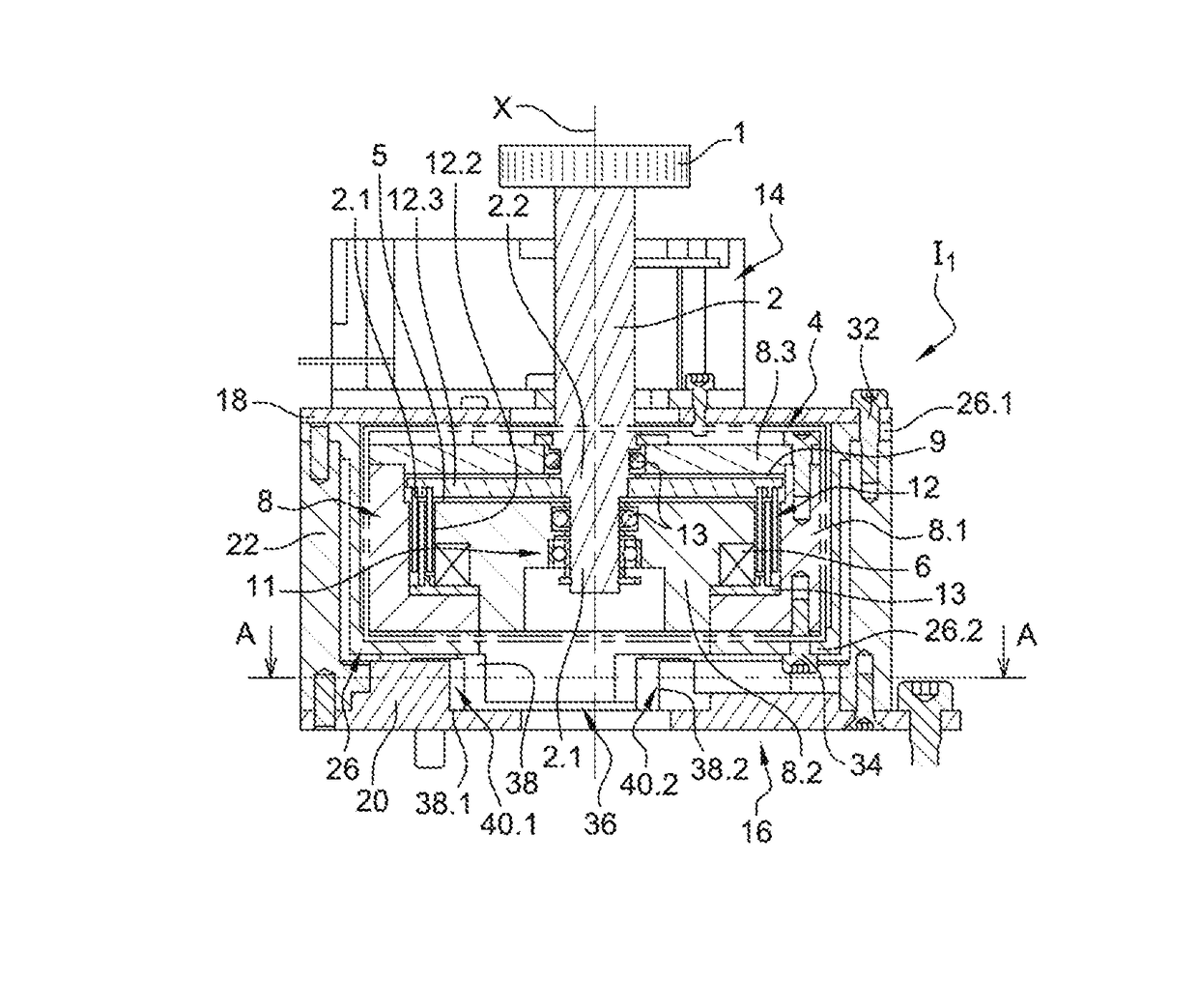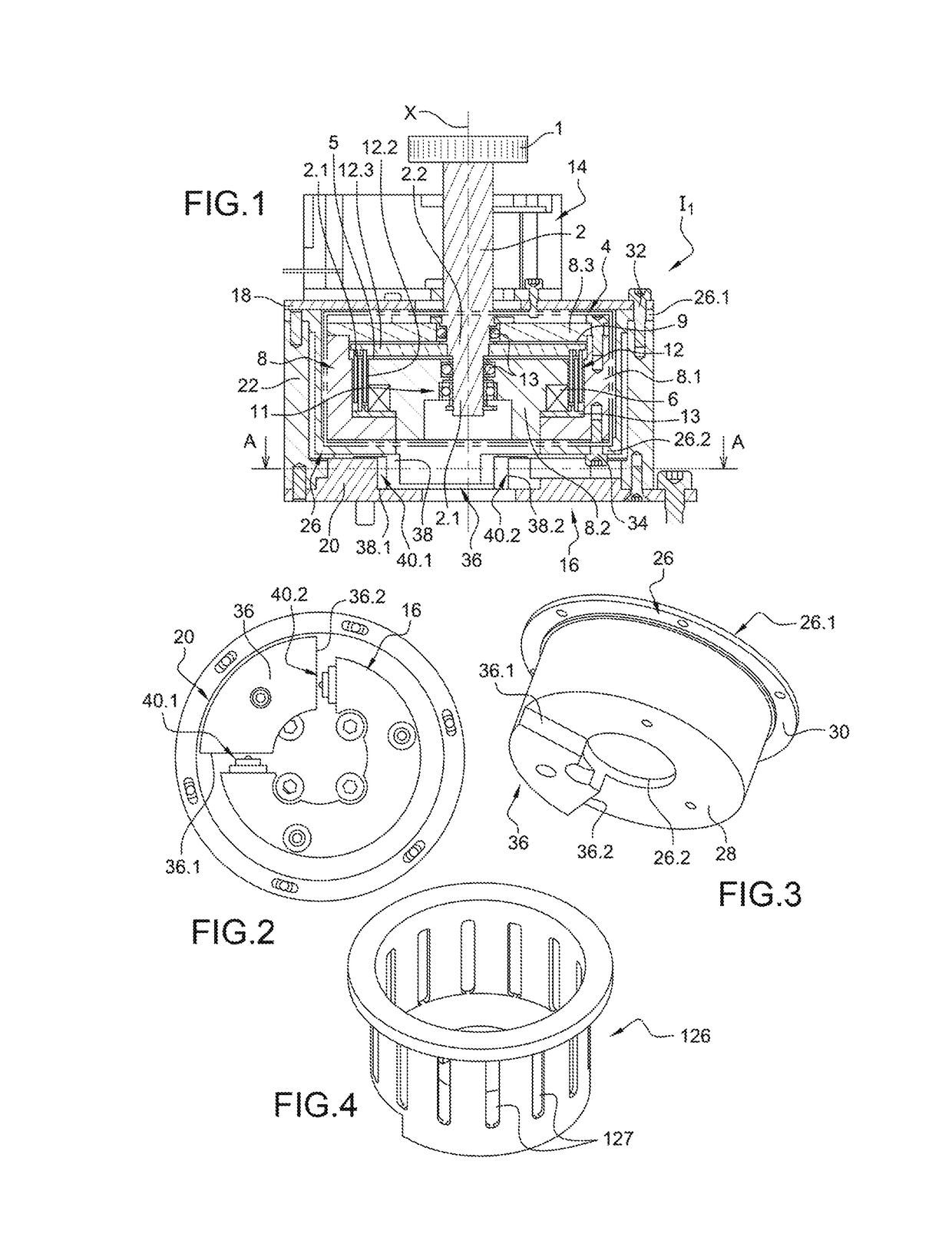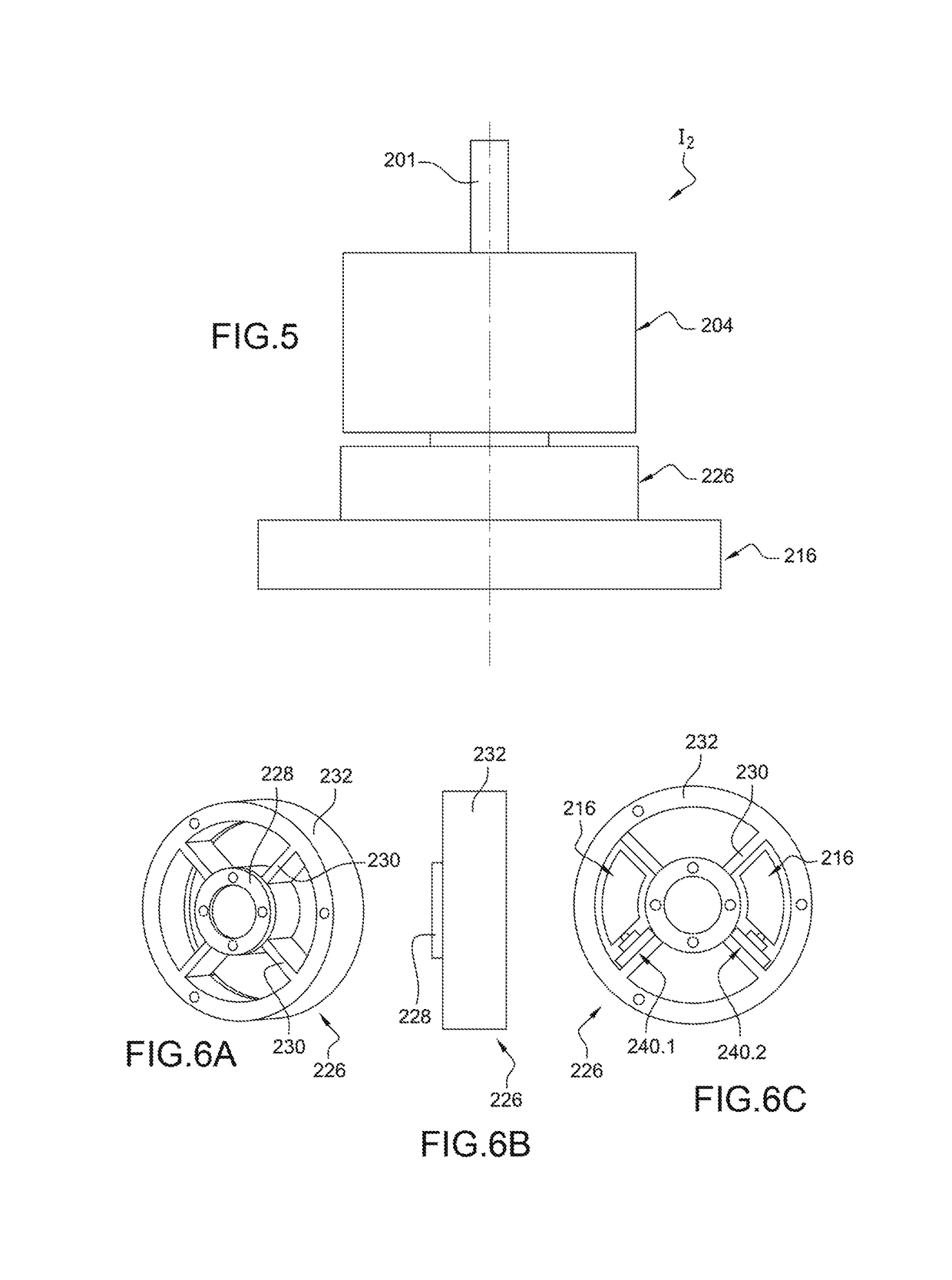Fluid haptic interface with improved haptic rendering using a torque or load sensor
a haptic rendering and torque technology, applied in the direction of limiting/preventing/returning movement of parts, controlling members, alarms, etc., can solve the problems of affecting the perceived haptic quality, affecting the haptic rendering, and applying a significant load
- Summary
- Abstract
- Description
- Claims
- Application Information
AI Technical Summary
Benefits of technology
Problems solved by technology
Method used
Image
Examples
Embodiment Construction
[0008]Consequently, one aim of the present invention is that of offering a haptic interface offering improved haptic rendering, particularly in the case where the haptic pattern varies between a first movement direction and a second direction opposite the first movement direction, for example in the case of reproducing a stop.
[0009]The aim described above is achieved by a haptic interface comprising a member for interacting with the user and a member for interacting with a fluid, the viscosity whereof varies according to a control stimulus, the two members being secured at least in rotation or at least in translation, means for generating a variable stimulus, a sensor for measuring the current position of the element for interacting with the user, and means for detecting the user's intended action before the motion applied to the element for interacting with the user becomes perceptible for the user and for the position measurement sensor in order to determine the direction of movem...
PUM
 Login to View More
Login to View More Abstract
Description
Claims
Application Information
 Login to View More
Login to View More - R&D
- Intellectual Property
- Life Sciences
- Materials
- Tech Scout
- Unparalleled Data Quality
- Higher Quality Content
- 60% Fewer Hallucinations
Browse by: Latest US Patents, China's latest patents, Technical Efficacy Thesaurus, Application Domain, Technology Topic, Popular Technical Reports.
© 2025 PatSnap. All rights reserved.Legal|Privacy policy|Modern Slavery Act Transparency Statement|Sitemap|About US| Contact US: help@patsnap.com



